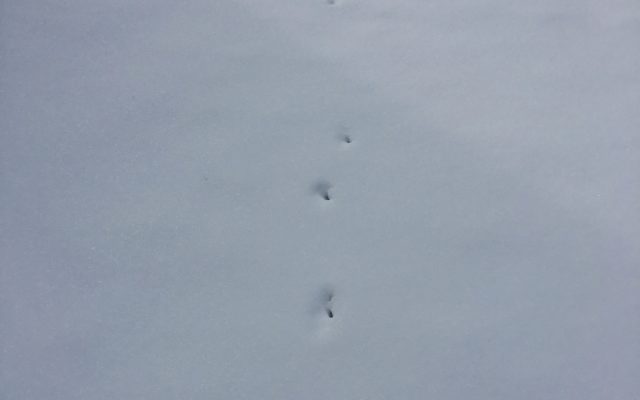
Tracks in the snow can provide mysteries worth pondering
Maine’s woods are full of mysteries, large and small. Sometimes, those of us who spend time afield might not recognize all of the mysterious goings-on around us. At other times — like when there’s a fresh coating of snow on the ground — the evidence is much more clear.
For me, even the most common group of animal tracks in the snow can turn into a mystery worth solving.
The first question, of course, is the simplest: What made these tracks?
Then, more complex questions spring to mind: What was this critter going? What was it up to? Why do these tracks end right here?
Of course, the best mysteries are the ones that never get beyond that first question. In those cases, we’re left with a bunch of footprints in the snow, and no real idea of what kind of wild beast had stopped by for a visit.
I’m the first to admit that I’m not an expert at track identification. I can pick out the telltale track of a snowshoe hare, which looks like an odd three-legged animal has been hopping through the forest.
I know moose. And deer (usually, though you may doubt that after reading the rest of this column). Wild turkeys are easy to identify, too. But there are all kinds of gaps in my knowledge base, and all it takes is a bit of snow in an otherwise clear track to throw me off course.
And I’m amazed at how many times a fellow outdoors enthusiast will admit that they’re not so great at identifying animal tracks, either. Many of us are in the same club, apparently.
When there’s a bit of snow on the ground, a simple walk in the woods can leave me wondering what I’m sharing the forest with.
Not that that’s always a comforting thought, of course.
Once, while deer hunting in fresh snow, I found an alarmingly large bear track in the snow. Trust me, when you’re sneaking through the woods alone and find evidence that another large critter is nearby, it’ll make you check over your shoulder a bit more often.
Despite many conversations with bear biologists who have explained why and when bears head to their dens, (as well as that during some years, bears will remain out of those dens until late December) on that particular morning, I promptly forgot everything I’d spent years learning.
The only thought I can remember having was, “what the heck, bear? Aren’t you supposed to be off hibernating or something?”
These mysteries don’t always arise when I’m out in the woods hunting, or fishing. Sometimes, those episodes take place much closer to home.
When I take my dogs out to answer their periodic calls of nature, for instance, I often find evidence that nature, in one form or another, has dropped by for a visit.
The other day, I found a set of tracks that seemed a bit odd to me. Four footprints in a pattern that covered about four linear feet, and then about a four-foot gap between the next set of similar prints. The tracks continued in that pattern as far as I could see.
Due to recent fresh snow, I couldn’t see whether the tracks were made by hooves or paws, but I suspected that a trotting deer might have been the visitor.
I looked online for photos of similar track patterns and didn’t find any. Then I started talking to outdoorsy friends, including hunters and hikers.
Nobody had a real good answer for me. Although we all quickly ruled out sasquatch, chupacabra and werewolves, we didn’t get much farther than that. It could have been a coyote. Or a bobcat. Or a deer.
So today, I’m sharing the mystery with you. Take a look at the tracks. Tell me what you think. And as always, feel free to pass along your own woods mysteries to me.
John Holyoke can be reached at jholyoke@bangordailynews.com or 207-990-8214. Follow him on Twitter: @JohnHolyoke. His first book, “Evergreens,” a collection of his favorite BDN columns and features, has been published by Islandport Press and is available wherever books are sold.